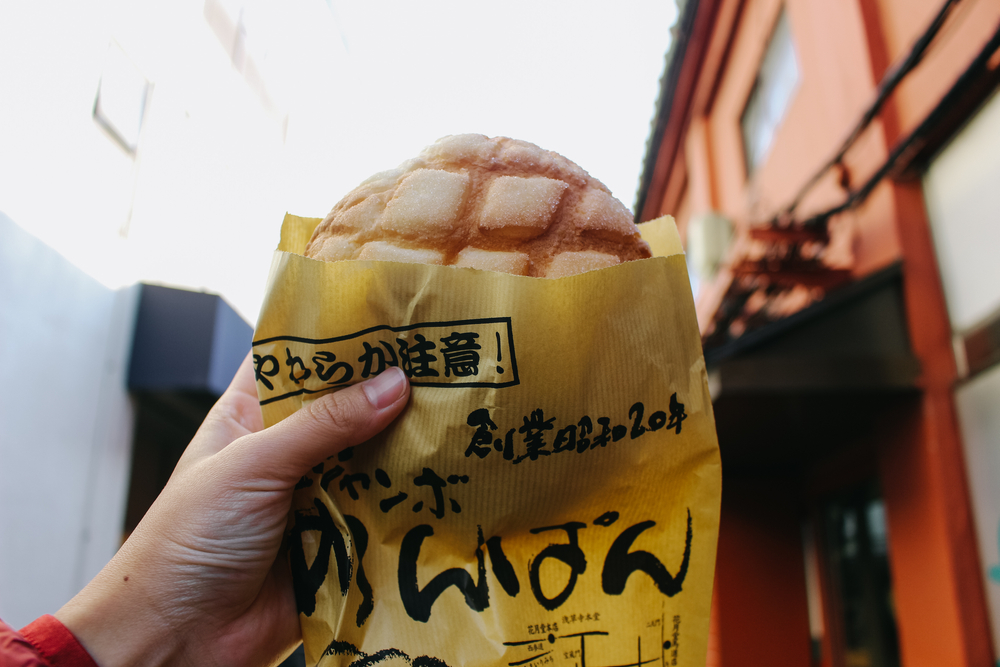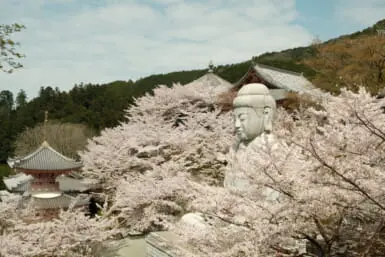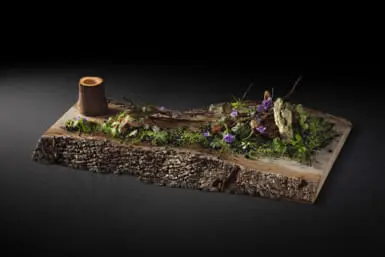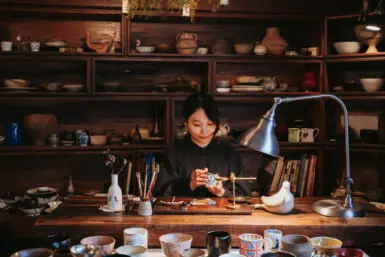Often translated to “melon bread,” this Japanese bakery staple comes in various forms and sizes. It’s also almost never infused with melon flavorings. Far from being a fanciful, homegrown creation, there’s a more mysterious history to this innocuous morsel than a passing glance at a bakery window lets on.
Origins of Melon Pan
Some say that melon pan was invented in Japan and first appeared in some form at Kinseido, a Kobe bakery founded in 1924. However, at Kinseido it’s called sanuraisu — sunrise. The current owner claims their uncle concocted this biscuit dough-topped bread before World War II when the production of warships was booming in nearby Kure. The cross-hatch pattern was inspired by the radiating sun on the naval flag.
What they call melon pan at Kinseido isn’t what you’d expect. Instead, this rugby ball-shaped bakery item is an invention of the 1930s. It owes its name to a meron-gata, a metal mold used for rice in yoshoku restaurants at the time. Rather than being topped with the slightly crunchy dough you see on melon pan, they are unadorned but come filled with shiro-an (white bean paste).
The origin of the story lies at the aptly named Melonpan, a Kure bakery specializing in melon-pan, which in 1936 apparently came up with the idea of using the meron-gata to easily mold the dough. Except in Kure, it’s filled with custard cream instead of shiro-an. The main store still exists, though it has many locations in department stores. Another theory states it was a baker from the Kobe Consumers’ Union (now Co-op Kobe) who, in 1952, invented this bosui-kei (spindle-shaped) melon-pan.
The genesis of the melon pan that Tokyoites and bakery fiends around Japan know may be older still. And it almost certainly began outside of this country.
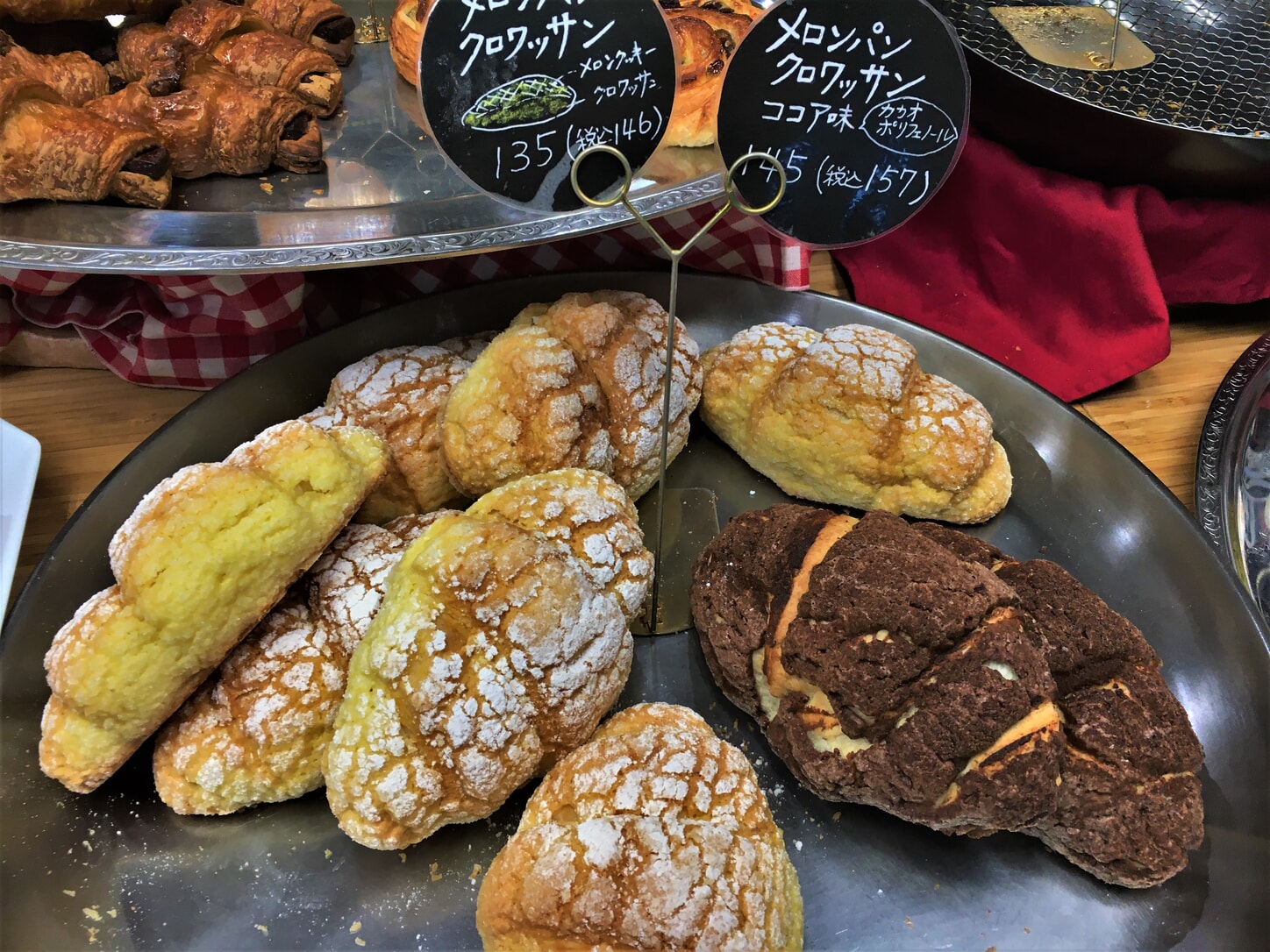
Croissant-shaped melon pan
Armenian Roots
In 1917, an Armenian baker for the Romanov family named Ivan Ghevenian Sagoyan fled from the Russian Revolution. Specifically, he escaped to the New Harbin Hotel. That was where he apparently met Okura Kihachiro, an entrepreneur and founder of the Imperial Hotel. Kihachiro invited Sagoyan to work at his hotel in Tokyo. Sagoyan agreed. He settled in Meguro and founded a bakery called Monsieur Ivan while he worked at the hotel.
Romantic as it is, the historicity of this tale, as told in The Armenian Mirror-Spectator, is questionable. Sagoyan may well have existed, given the dozens of cooks who likely worked on confectionery duty in the Romanovs’ kitchen, but whether he invented melon pan is up for debate.
Though, the bakery bears his name and he’s mentioned on their website, it seems his bakery was more evidently under the helm of a student named Motoyoshi Fukuda. He was the inventor of hotel bread: a soft, sweet loaf made using milk instead of water.
Monsieur Ivan is still going, with three locations in Tokyo’s Tama region. Interestingly, their melon pan has neither the usual markings nor the shape of the Showa-era (1926-89) Kansai iterations.
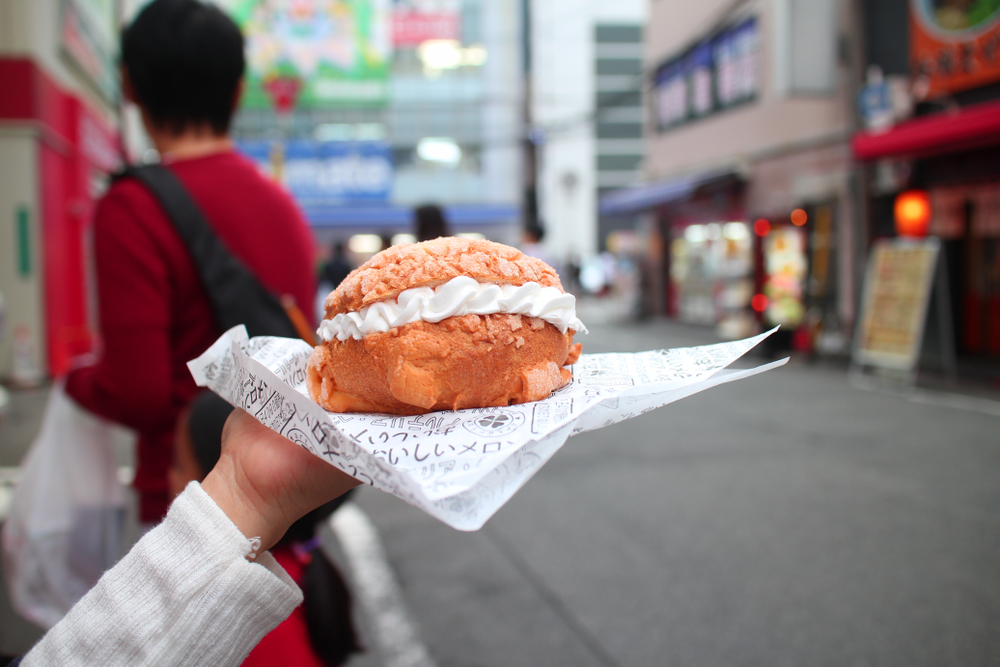
Melon Pan Around the World
What cannot be denied is melon pan’s similarity to other Asian baked goods. One is the Korean soboro-ppang, which is also topped with (often peanut butter-infused) streusel. It’s thought the soboro in its name, a Japanese word referring to minced, finely chopped or otherwise loosened meat, fish or eggs, was a visual descriptor: streusel somewhat resembles soboro.
Another is the more pre-eminent bo lo bao (pineapple bun) of Hong Kong. This sometimes comes with a wedge of butter melted between two halves. Other times it’s filled with custard cream. Like melon-pan, the pineapple bun is named for its look rather than its taste.
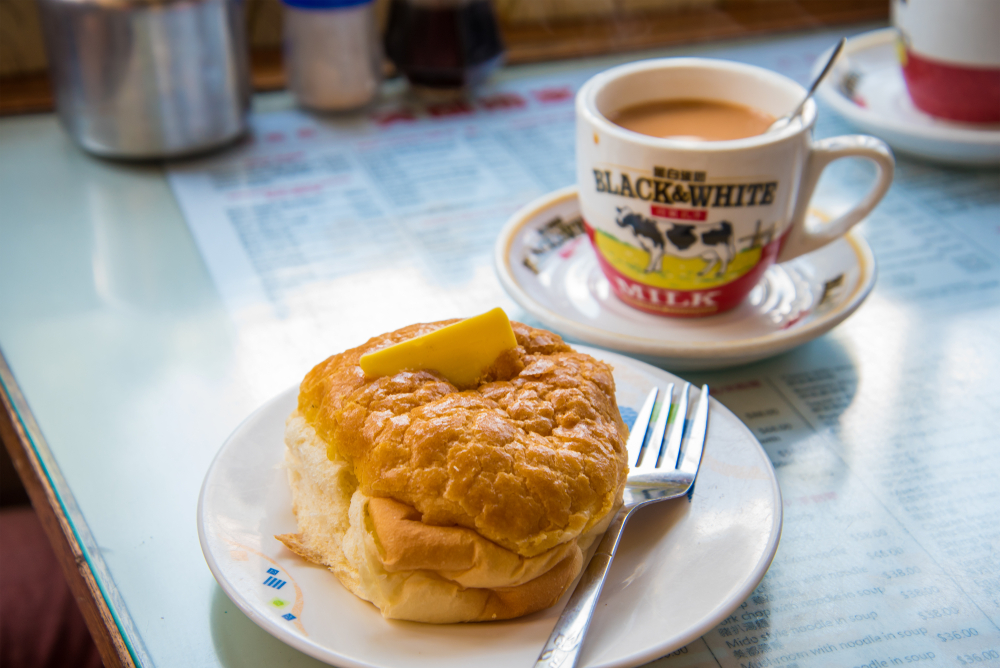
Hong Kong bo lo bao (pineapple bun)
From Hong Kong to Mexico
To sample bo lo bao here in Tokyo, it’s best to pay a visit to Hong Kong Cafe Chan Ki. This Iidabashi mainstay features a menu jostling with cha chaan teng (a traditional Hong Kong cafe) staples like milk tea — bo lo bao included.
But bo lo bao isn’t the only streusel-topped bakery item from Hong Kong. It’s the other variety found in the former British colony that could point to the beginnings of melon-pan itself. It’s called moxige bao (Mexico bun), and curiously looks very similar to the melon-pan from Monsieur Ivan.
Essentially, the moxige bao is a concha. Literally “seashell,” concha is one of the many pan dulce (sweet breads) on offer throughout Mexico. How it arrived in Hong Kong is a story of immigration and emigration. Though Chinese immigration to Mexico began en masse in the late 19th century, it wasn’t long before anti-Chinese sentiment swept the country, reaching its height in the 1930s when the majority of the Chinese and Chinese-Mexican population were deported from the country.
Many of these people found their way to Macau or Hong Kong. Some attempted to blend in, others retained their culture, singing ranchera songs and practicing Catholicism. One example is the Ng family, who opened a bing sutt (a forerunner of the cha chaan teng) on Hong Kong’s Shanghai Street in 1946. Paying homage to their former homeland, they baked and sold concha, calling it moxige bao. It is likely that the bo lo bao had a similar introduction.
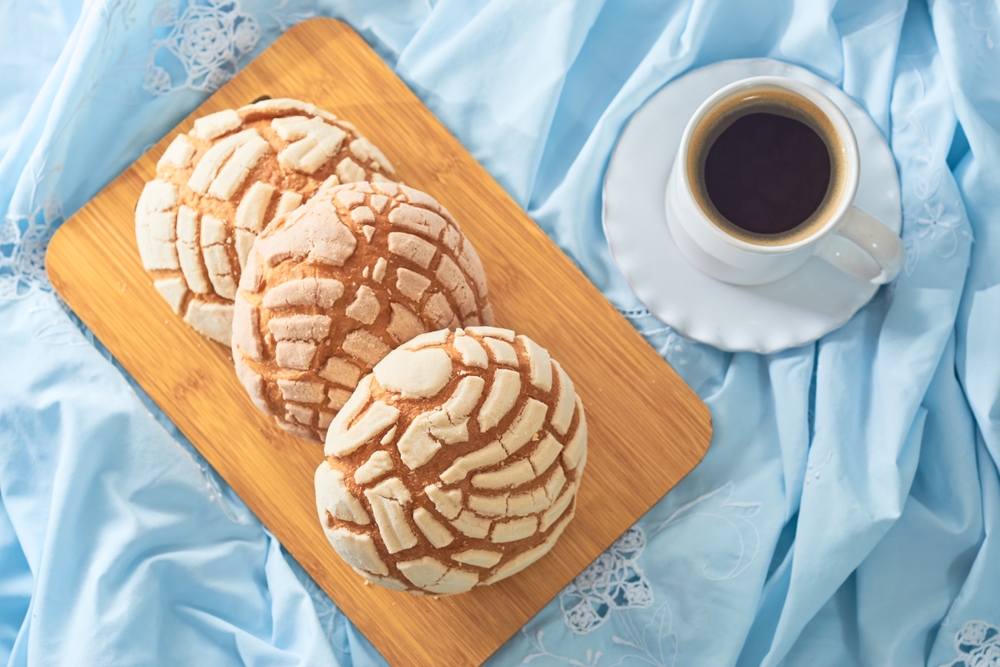
Concha, Mexican sweet bread
A French Influence
The concha itself, like many of Mexico’s pan dulce, is a vestige of a period of French occupation during the Second French Intervention (1861-67), in which Napoleon III installed a European royal, Maximilian von Habsburg, as Mexico’s emperor. Maximilian I reigned for just three years before his execution on 19 June 1867.
Though again named for its shape, the concha in all other aspects resembles — both in substance and style — a brioche streusel or streusel Alsacienne (also called a brioche fleurie or “flowery brioche”). As the name suggests, this pastry originates in the Alsace region of France. Given the similarity of the bakery item, the meddling of France in Mexico’s affairs, not to mention Alsatian immigration to the region (Castroville in what is now Texas is one famous example), it’s not implausible that a streusel-topped brioche found its way from Europe to Mexico and onwards to Hong Kong.
It is also possible that it made the same trip to Japan via Russia and the runaway Sagoyan. The existence of a streusel-topped brioche in Russia, namely the Sverdlovsk bun, could serve as evidence for the transference of the baked good to Japan. Then again, it’s also possible that it came to Japan via Chinese immigrants from Mexico. The location of Kinseido in Kobe, home to one of Japan’s largest Chinatowns, could weigh in favor of this theory.
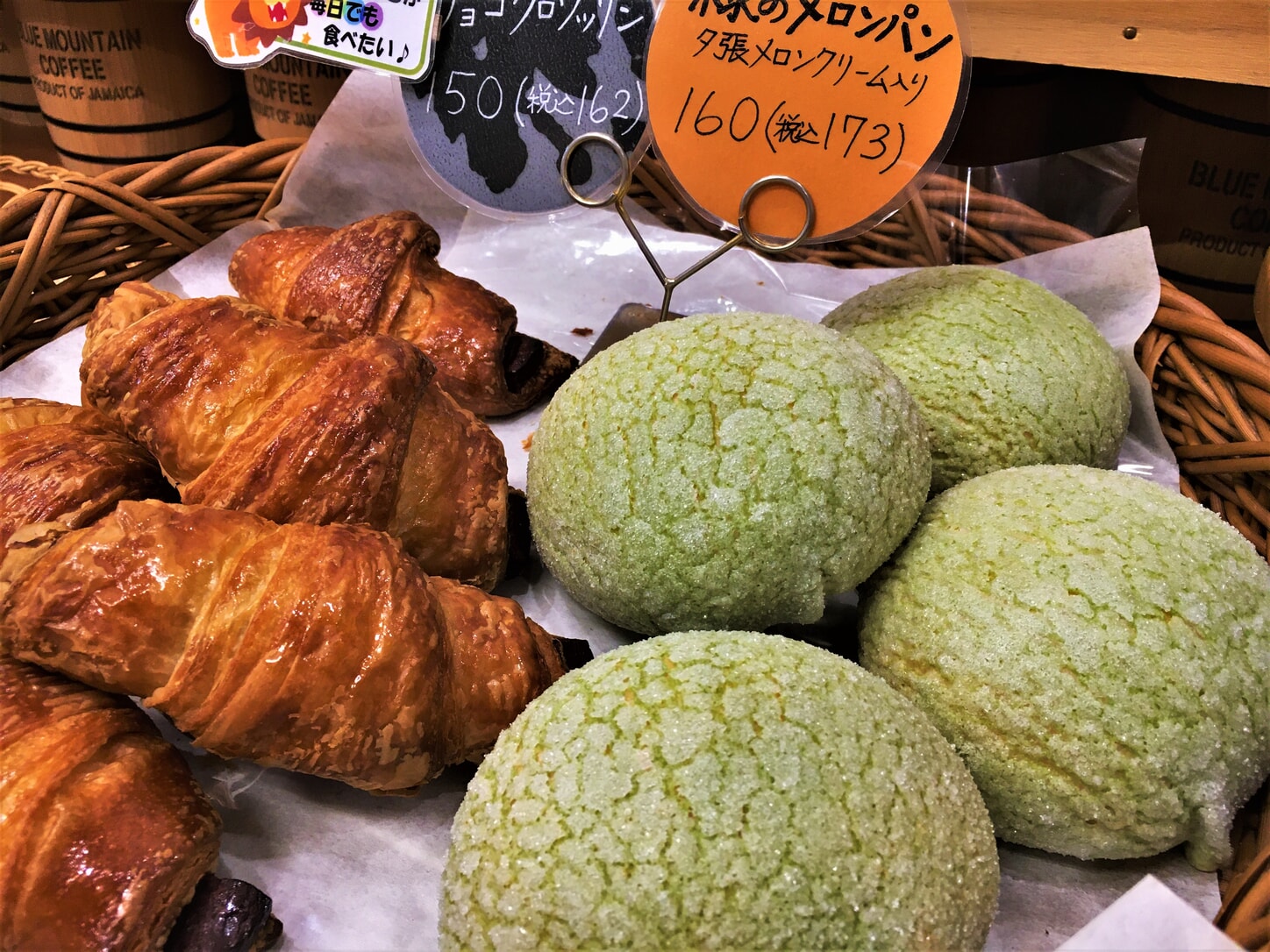
Ultimately, the different varieties suggest there could be multiple origins. Whether it’s the rugby ball-shaped one, the type smothered in cracked cookie dough like the skin of a muskmelon, or if it’s the “sunrise” style ubiquitous across the country — from pre-packaged 7-Eleven offerings to specialty shops like Kagetsudo in Asakusa (try their janbo melon pan; ¥220) — the birth of melon-pan is nevertheless rooted in a varying medley of globalization, revolution and immigration.

